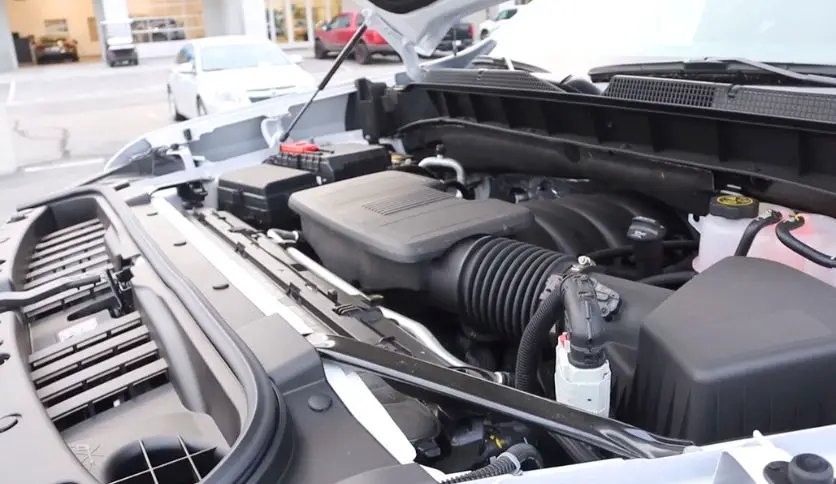If you’re the proud owner of a Chevy Silverado, you know it’s more than just a truck—it’s a reliable partner for work and adventure. But like any vehicle, it has its fair share of mechanical needs, one of which is the transfer case. This vital component can sometimes require costly repairs, and it’s important for Silverado owners to understand what these costs entail and how to manage them. Let’s dive into the world of transfer cases and explore the financial side of keeping your Silverado in top shape.
Contents
What is a Transfer Case?
The transfer case is the heart of your Silverado’s four-wheel-drive system. It’s a specialized gearbox that distributes power from the engine to both the front and rear axles. This allows your truck to tackle tough terrain and maintain traction in challenging conditions. However, when this part starts to fail, it can lead to some serious Chevy Silverado Transfer Case Problems.
Symptoms of a Failing Transfer Case
Recognizing the early signs of a failing transfer case can save you from a hefty repair bill. Here are a few red flags:
- Strange noises, such as grinding or humming, when shifting gears.
- Difficulty shifting between two-wheel and four-wheel drive.
- The vehicle popping back into two-wheel drive on its own. These symptoms suggest it’s time to get your transfer case checked out by a professional.
Factors Influencing Repair Costs

When it comes to repairing the transfer case of your Chevy Silverado, the bill can be as unpredictable as a dirt road after a heavy rain. It’s not just about what’s broken; it’s about the details surrounding the repair. Here’s a closer look at the factors that can drive up your repair costs.
Complexity of Repairs
The transfer case is a complex beast. It’s not just one part but a series of components working in harmony to shift power from the engine to the wheels. Some issues might be straightforward, like replacing a worn seal or gasket, which won’t break the bank. But if you’re dealing with internal damage, gear problems, or electronic malfunctions, the complexity skyrockets. A complete overhaul involves taking apart the transfer case, diagnosing every issue, replacing numerous parts, and then putting it all back together. This kind of repair is both time-consuming and material-intensive, leading to a higher cost.
Labor Costs
Labor costs can be the wild card in your repair bill. Mechanics with the know-how to diagnose and fix transfer case issues are in high demand, and their time comes at a premium. Rates can vary significantly depending on the shop’s location, the mechanic’s experience, and the going rate in your area. Dealerships might charge more but offer specialized expertise, while independent shops could present a more cost-effective solution. Remember, though, that cheaper isn’t always better. A skilled mechanic might charge more per hour, but they could save you money in the long run by getting the job done right the first time.
Location
Just like real estate, auto repair costs are all about location, location, location. If you’re in a bustling city with high living costs, you can expect to pay more for auto repairs due to higher shop rates, labor costs, and part prices. On the flip side, rural areas might offer lower rates, but they might not have a specialist readily available, potentially leading to higher travel costs or longer wait times for parts. Additionally, the availability of parts can vary by location. If your mechanic has to order parts from far away, you’ll likely see that reflected in your final bill.
Understanding these factors won’t just prepare you for the costs associated with repairing your Silverado’s transfer case; it’ll also help you make informed decisions about where and when to get the repairs done. Knowledge is power, especially when it comes to navigating the complexities of auto maintenance and repair.
Average Costs for Transfer Case Repairs
On average, you might expect to pay anywhere from $500 to $2500 for transfer case repairs on your Silverado. Minor repairs, like replacing seals or small parts, will be on the lower end, while a full Transfer Case Replacement can hit your wallet much harder.
DIY vs. Professional Repair
For the mechanically inclined, some transfer case issues can be a DIY project. However, this isn’t for the faint of heart—transfer cases are complex and require a good deal of expertise to fix properly. If you’re not confident, it’s always best to go with a professional to avoid causing more damage.
How to Save on Repair Costs
To keep repair costs down:
- Stick to a regular maintenance schedule.
- Use high-quality fluids and parts for your transfer case.
- Shop around for the best repair quotes and don’t shy away from asking for a second opinion.
The Long-Term View
Maintaining your transfer case isn’t just about avoiding repairs; it’s about preserving the value and performance of your Silverado. Regular check-ups and timely repairs can prevent small issues from becoming big, expensive ones.
Conclusion
Understanding the potential costs associated with transfer case repairs can help you budget and plan accordingly. With this knowledge, you can ensure that your Chevy Silverado remains the reliable, powerful truck you need it to be, ready to face any road or challenge that comes your way.

Hello, this is Wesley Shelton, currently working in a car restoration company for over 5 years. Before that, I was a worker at a small car repair shop. As I was a car freak from a young age and worked as a professional for over half a decade, I think I now know pretty much everything about every car and its parts. To establish my name as a professional and help others by sharing my knowledge, I’ve created this website, which I work on whenever I get free time. I hope you’ve enjoyed my informative blog!


